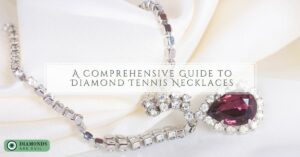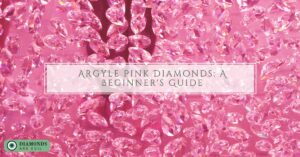Introduction
The concept of lab-grown diamonds is not new to the 21st century. The system of lab-creating diamonds started in the 1940s. However, it is not everyone that knows about this concept, and certainly, not everybody knows about the processes involved in lab-creating diamonds.
Lab-grown diamonds are an alternative way by which diamonds are created. The formation of these unnatural diamonds is a process that involves a reproduction of the environmental climate responsible for creating natural diamonds. There have been major concerns about the durability, quality, and authenticity of these diamonds, which have been addressed by many researchers.
The main purpose(things) of this analysis is to address the validity and viability of the subject of lab-created diamonds and also to elucidate certain facts behind the relationship between a natural diamond and a lab-grown diamond. Most importantly, to unveil the facts behind how big a lab-grown diamond can be.
What is a diamond?
Diamonds are precious gemstones found on the Earth’s crust. It is rocky in nature, crystal-like, glimmers, and essentially beautiful to look upon. The usefulness of these precious gemstones cannot be overemphasized as various personalities from different works of life gracefully bare these ornamental stones on different parts of their bodies on different pieces of jewelry ranging from earrings, necklaces, chains, rings, bangles and so on.
History of diamonds
Without a shadow of a doubt, diamonds have been existing long before man came into existence. The force behind its creation is Supreme and cannot be searched out. However, Geologists have made it possible for us to know that diamonds can be traced back to the 4th century BC. Its existence can be traced to one billion to three billion years ago.
How diamonds are made
The history behind the creation of diamonds is paramount at this junction in order to elucidate the characteristics behind the formation of natural diamonds. This will help to fully understand the concept behind lab-created diamonds.
Diamonds are formed when there is an exposure of carbon dioxide of excess heat up to about 2200 degrees Fahrenheit, which inevitably leads to excessive pressure of around 727000 pounds per square inch. The effect of these is immediate transportation of diamonds from its location deep beneath the rock to the Earth’s surface through an inevitable volcanic eruption.
How lab-grown diamonds are made
The process behind the creation of lab-grown diamonds and natural diamonds are the same. The processes both involve a process of exposure to excess heat using carbon as a seed-material to carry out the formation.
Therefore, we can rightly say that the force behind the formation of lab-grown diamonds is a reproduction of the heated climate available in the natural environment.
Lab-grown diamonds can be made in two major ways.
- High Pressure-High Temperature (HPHT).
- Chemical Vapour Depositions (CVD).
High Pressure-High Temperature
There are three processes involved in the creation of HPHT diamonds; they are:
- The belt press method.
- The cubic press method and
- The split-sphere method.
Any of the processes mentioned above can reproduce the needed heat to reproduce the natural climate for the formation of a lab-grown diamond.
This process of forming diamonds involves using a small seed of diamonds, which is enclosed in a carbon. The seed is thereby processed through any of the processes mentioned above to reproduce the level of heat needed to produce the diamond. The result of this process is the exposure of the seed to a heat of around 1500 degrees Celsius, which is pressured to a tune of about 1.5 million pounds per square inch. This is the force behind the production of a lab-created diamond using the HPHT method.
Chemical Vapour Deposition (CVD)
The CVD method involves the use of a little or a tiny piece of diamond seed to form a diamond. In this case, unlike the HPHT, the seed needed is an HPHT diamond, which is likewise enclosed and exposed to a heat of about 800 degrees Celsius.
The heat used is a carbon-gas, which is such that is used in microwaves, lasers, oven, and other intensely heated equipment. The examples of gases used here are methane and many such hydrocarbon gases. This process ionizes the gas to the level needed to break the molecules of the gases to bring into manifestation its crystal nature.
Are there any differences between natural diamonds and lab-grown diamonds?
This is a question that has bothered many shoppers over time. Many consumers have questioned the quality, durability, value, and viability of lab-grown diamonds, and this is a major cause of concern for diamond shoppers.
I wish to categorically state at this point that there are no major differences between the duo types of diamonds (including size). This is because the force and pattern of forming the two diamonds are the same. They are both exposed to excess heat needed to form the diamonds (don’t expect lab grown diamonds in the size of a basketball).
To be all-encompassing, as the name implies, lab-grown diamonds are grown in the lab while natural diamonds are created by nature. Likewise, natural diamonds are rarer than lab-grown diamonds. The rationale behind the lab-grown diamond is the reproduction of the climate responsible for the formation of natural diamonds.
These labs are specialized laboratories with the proven success of research in the technological world. These labs are likewise operated by qualified and erudite researchers with proven facts in historical research and ground-breaking achievements.






